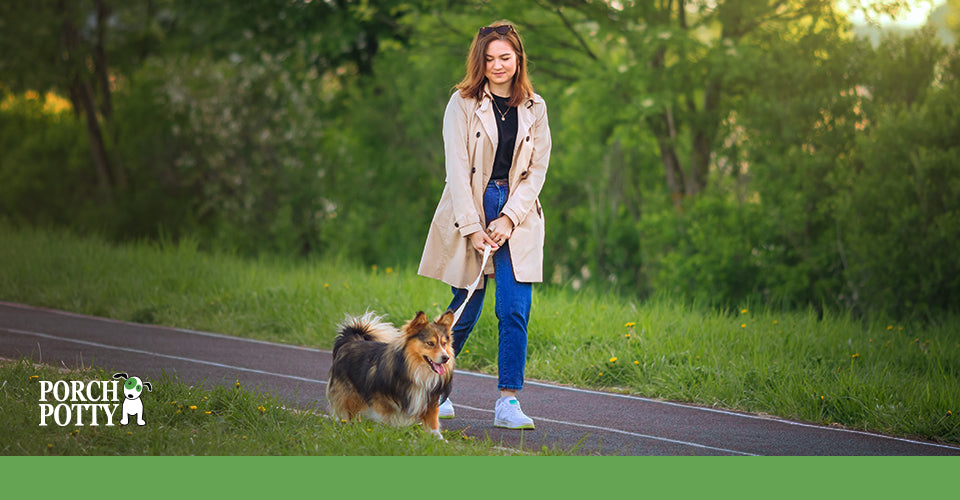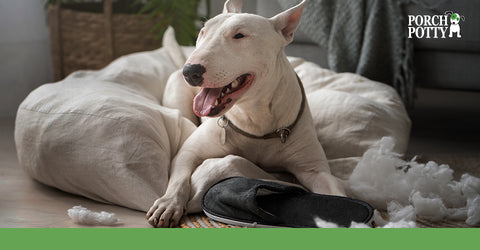
We all know that dogs need to be walked to be able to “do their business” and enjoy the sunshine. But did you know there are many other benefits to walking your dog?!
The benefits aren’t only physical, but mental too. In fact, many behavioural issues have been linked to dog’s not receiving enough exercise, so walking your dog is very important!
Behavioral Issues linked to too little exercise: destructiveness (chewing and digging), investigative behavior (garbage raiding), hyperactivity, unruliness and excitability, attention-getting behaviors, some forms of barking
Benefits of Walking Your Dog
Walking your dog can be fun for both you and your dog, but there are more benefits than just that! Some of the benefits include:
- Improved cardiovascular fitness
- Lower blood pressure
- Improved body condition- keeps them at a healthier weight and their muscles and joints in good condition which can reduce their risks of developing various diseases
- Improved mental health- it gives them stimulation, preventing boredom and reducing anxiety which can mitigate unwanted destructive behaviours
How often should I walk my dog?
This can be a bit of a tricky question! Most healthy dogs can go for at least a 15-30 minute walk, multiple times per day. If you have a senior pet, or a pet with a health condition then the recommended length of their walk may differ.

Just because you've hit the minimum amount of exercise, you can keep going!
One way to determine how much exercise your pet needs is by letting them dictate their own level. So, this essentially means, let them decide! Most dogs know their limit and will stay within it.
Adding exercise into your dog’s daily routine can reduce canine separation anxiety.
That being said, some more high-energy breeds may not follow such a rule and may over do it! In that case, you will need to ensure that they don’t over do it.
The breed of your dog plays a large role in the amount of times you walk them per day, because each breed (and personality!) will require different levels of activity.

High-energy breeds include:
- Border collies
- Australian shepherds
- Australian cattle dogs
- Malinois
- Poodles/Doodles
Where as, some low-energy breeds are:
- Pug
- Mastiff
- Great Dane
- Basset hound

Choose a breed that matches your energy level and you'll both be happier.
Be sure to collaborate with your veterinarian to determine just how much exercise is appropriate for your furry family member!
How can I tell if my dog is getting too much exercise?
Exercise is of great benefit to pets, but there is the potential to over do it.
Some indicators that your pet may be over doing it may include:
- Limping after exercise (the day of or the day after)
- Stiffness the day after exercise
- Excessive panting during and after exercise
- Showing no interest in their regular exercise routine the next day
- Vocalizing during exercise
- Losing weight
If you see any of these signs, then you should adjust your pets daily exercise routine and/or feeding routine if they are losing weight.
If your pet suddenly starts displaying these signs but has always been on the same exercise routine then you may want to give your veterinarian a call in case they are developing an underlying health condition.
How can I tell if my dog is getting too little exercise?
The root of many behaviour problems that pet owners encounter with their dogs is often lack of exercise and mental stimulation for their dog. Many dogs, especially high-energy dogs, will get quite bored without sufficient exercise. This boredom may lead to changes in their behavior, demeanor and physical condition.
Some signs that your dog may not be getting enough exercise are:
- Gaining weight
- Restlessness
- Destructive behaviour, such as chewing household items
- Excessive vocalizing – whining or barking
It’s estimated that 60% of household pets are overweight.
These behaviours are often incorrectly perceived as your pet suddenly deciding to be mischievous, but in reality they are bored! That being said, be sure to speak with your vet if you experience any of these behaviours because there is a chance that any change in behaviour can be from a medical condition.

More often than not, however, the behaviours described above, in healthy young dogs, are typically from lack of stimulation.
What are some alternatives to walking my dog?
Walking your dog is not the only way to stimulate them! Don’t get me wrong, walks are a wonderful way to tucker your dog out, but some dogs aren’t able to tolerate walks. Whether your dog has a physical disability, injury, or is just simply aging- sometimes walking them just isn’t an option.
If you notice that your dog has lost a bit of pep in his step and your veterinarian has ruled out medical issues, consider a hip and joint support supplement like Porch Potty’s Hip & Joint Max.
If you’re still eager to get them outside, getting a wagon or pet stroller can help your pet get outside and still get stimulation. While physically walking your dog is part of the stimulation, so are all of the sights and smells that they encounter! So being in a stroller or wagon still allows them to get the sights and smells, without challenging them physically.

Other ways to stimulate your dog include:
- Snuffle mats & food puzzles- placing their kibble or treats in a snuffle mat or food puzzle allows them to exercise their olfactory receptors by using their nose to find their food
- Snifferies- these are places that are specifically designed for dogs to follow their nose! They can consist of a little doghouse with specific scents throughout it, or dog specific trails.
- Underwater treadmill- these aren’t just meant for canine physical rehabilitation but for exercise too! Walking in water provides extra resistance, so it is a significant amount of exercise for your pet. It’s not just for athletic pets either! It is a great alternative for physically disabled pets as the water can be raised to a level that supports your dog’s weight (without making them swim), which will make walking less demanding on their joints.
- Doggy play dates- if your dog is friendly, book a play date with one of their doggy friends! Being able to socialize, run and play with their friend is sure to tucker them out. Booking a play date with a dog that you know is friendly and vaccinated is also a lot safer than going to a dog park!

Underwater therapy is great for dogs with aching joints.
If you’re looking to add more exercise to your dog’s day, one thing to remember is to ease into new routines slowly. If your dog has put on a few extra pounds, don’t try to sign them up for a 10k Canicross race immediately. Just like us, our dogs adapt better with incremental changes.
Small Changes Add Up Over Time
Walk an extra block more than usual. Stop at a field and let your dog sniff until her heart is content. On poor weather days, or if your dog isn’t a fan of the outdoors, you can add indoor dog games like tug-of-war, obedience training or a rowdy game of chase.
Whatever you decide to do, make it fun and you’ll both be more likely to stick with it.
For more information on doggy health, check out these articles:
When Can I Begin to Walk My Puppy Outside?




